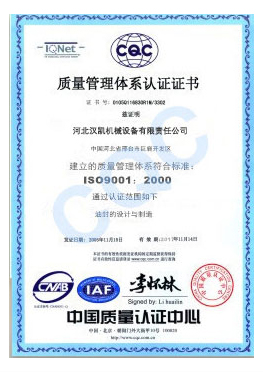Dec . 03, 2024 16:55 Back to list
Seal kit solutions for optimizing pump performance and ensuring reliable operation
Seal Kit for Pump Ensuring Efficiency and Longevity
When it comes to industrial pumps, maintaining peak performance is essential for operational efficiency and cost-effectiveness. One critical component that significantly contributes to this efficiency is the seal kit. A seal kit serves as an integral part of a pump, designed to prevent fluid leakage and keep contaminants out, thus ensuring the long lifespan of the pump and its components. In this article, we will explore the importance of seal kits for pumps, their various types, and tips for proper maintenance and installation.
Understanding Seal Kits
Seal kits typically consist of a collection of seals, gaskets, O-rings, and other components required to achieve a tight seal in a pump. The primary function of the seal kit is to create a barrier that prevents leakage of fluids—whether they be water, oil, chemicals, or slurry—while simultaneously minimizing the ingress of dirt, dust, and other contaminants. As a result, seal kits play a pivotal role in the operational success of pumps across various industries, including water treatment, chemical processing, pharmaceuticals, and food and beverage.
Types of Seal Kits
Seal kits come in different types, corresponding to the specific needs of various pump models and applications. Some common types include
1. Mechanical Seal Kits These kits are designed for pumps that utilize mechanical seals to prevent leakage. The mechanical seal generally consists of two flat surfaces, one stationary and one rotating, that form a tight barrier when in contact. Mechanical seal kits may include sealing faces, springs, gaskets, and other necessary components.
2. Lip Seal Kits Often used in rotary pumps, lip seals consist of a flexible lip that maintains contact with the rotating shaft. Lip seal kits typically contain rubber seals or thermoplastic materials capable of withstanding various temperatures and pressures.
3. O-ring Kits O-rings are circular seals made from various materials, designed to be squeezed in a groove to create a watertight seal. O-ring kits typically include a variety of sizes and materials to cater to different applications.
4. Custom Seal Kits Some applications may require specialized seal kits tailored to specific pump designs or operational conditions. These kits may include custom-engineered seals and components to provide optimal performance.
Importance of Seal Kits
seal kit for pump

The importance of seal kits cannot be overstated. Here are some key reasons why seal kits are crucial for pump reliability
- Leak Prevention Leaks can lead to significant loss of fluids, resulting in increased operational costs and environmental hazards. A well-maintained seal kit can effectively prevent leaks, safeguarding both the pump and the surrounding environment.
- Equipment Protection A reliable seal kit protects internal components from contamination. By preventing ingress of dirt, dust, and moisture, seal kits extend the life of the pump and reduce maintenance costs.
- Operational Efficiency Efficient sealing reduces energy loss and minimizes wear and tear on moving parts. A pump operating at optimal efficiency not only saves energy but also enhances productivity.
Maintenance and Installation Tips
To ensure longevity and performance, proper maintenance and installation of seal kits are critical. Here are some tips
- Regular Inspection Periodically inspect seals for wear and tear. Look for signs of leakage, discoloration, or deformation, which may indicate that the seals need replacement.
- Proper Installation Follow manufacturer guidelines during installation. Ensure that the sealing surfaces are clean and free of debris to achieve a tight fit.
- Use Quality Components Opt for high-quality seal kits that are specifically designed for your pump. Using substandard components can lead to premature failure.
- Consider Operating Conditions Be mindful of the operating environment and any specific requirements. Some seals may be better suited for high temperatures or corrosive fluids.
In conclusion, seal kits are vital components that ensure the efficiency and longevity of pumps in various industrial applications. By understanding the different types of seal kits and their importance, as well as adhering to proper maintenance and installation practices, operators can maximize the performance and reliability of their pumping systems. Investing in high-quality seal kits pays dividends in the form of reduced downtime, lower maintenance costs, and extended equipment life.
-
TCN Oil Seal Metal Ring Reinforcement for Heavy Machinery
NewsJul.25,2025
-
Rotary Lip Seal Spring-Loaded Design for High-Speed Applications
NewsJul.25,2025
-
Hydraulic Cylinder Seals Polyurethane Material for High-Impact Jobs
NewsJul.25,2025
-
High Pressure Oil Seal Polyurethane Coating Wear Resistance
NewsJul.25,2025
-
Dust Proof Seal Double Lip Design for Construction Equipment
NewsJul.25,2025
-
Hub Seal Polyurethane Wear Resistance in Agricultural Vehicles
NewsJul.25,2025
-
The Trans-formative Journey of Wheel Hub Oil Seals
NewsJun.06,2025
Products categories
















